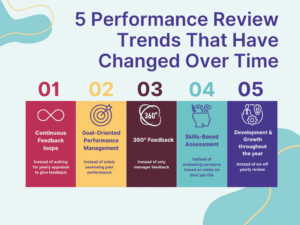TLDR
- Rituals are purposeful interaction scripts, making these interactions recognizable, repeatable, and predictable
- They have the power to install new habits in teams and even to alter dominant convictions about how things should be done
- Therefore, they form the ultimate levers for team cohesion and psychological safety
- Having the courage to install rituals within teams will lead to more courageous teams

What is a ritual?
Rituals are designed and scripted forms of interaction between people. Because they are performed according to a set sequence, rituals are recognizable, repeatable, and predictable. An important characteristic of any ritual is that it’s not just a random sequence of activities or actions, but that this sequence serves a clear, predefined goal.
Rituals in a business context
In teams and organisations, rituals play a powerful part in designing interaction between team members. By implementing certain rituals in your organisation and teams, you guide employees and team members in how to communicate and collaborate.
One example of a ritual in organisations and teams is the retrospective. Originated from the agile methodology, a retrospective is a session between members of a (project) team where they reflect on their work in a very structured way. What did we set out to achieve? What have we actually accomplished? Is there a gap in between? And if so, how can we explain this gap? The goal of a retrospective is to initiate a learning process. Getting people to openly and profoundly discuss what happened, what went wrong, and what can be learned from the mistakes. Without a retrospective, you risk moving on to the next project or task without knowing what went wrong with the previous one.
Another example of a ritual in organisations and teams is the check-in at the start of meetings. During a check-in, you make a quick round within the team to check how everyone’s doing. This way, all participants have a chance to get some things off their chest before the actual meeting starts. A quick check-in also helps with being present at the meeting as a person: by first sharing how you feel, you can be more open and honest during the meeting.
Different rituals, different goals
As mentioned before, a key component of a ritual is that it serves a clear, predefined goal. In the case of the retrospective, the goal is to initiate a learning process within a team by discussing mistakes openly instead of ignoring them. The goal of implementing check-ins can be to get things off your chest at the start of the meeting in order to have a more productive one after.
One ritual can serve more than one goal. Another goal for a check-in, for example, could be to avoid miscommunications. By taking the time to hear where everyone’s coming from and what their state of mind is coming into a meeting, you can adjust your communication style during the meeting. Let’s say you have someone in your meeting who’s homeschooling their kids and needs to start his/her shift after the meeting. It’s understandable that his person can’t take up any direct actions or to do’s after the meeting, so there’s no point in expecting this from them. By sharing these things at the start of the meeting, people don’t feel the pressure to explain themselves during the meeting.
Rituals to foster team performance
Humans are creatures of habits. When brought together in an unstructured way, people tend to stick to old patterns, doing things the way they’ve always been doing. Getting a dialogue started and implementing change becomes very difficult. In a business context, where people are trained to act like a professional and keep their personal thoughts for themselves, this is even more present.
We’ve all been in situations where we wanted to share our thoughts but lacked the nerve to speak up. Rituals help overcome that hurdle by creating a sort of predictability. A ritual is set up in the same way for everyone and follows a fixed pattern. A check-in for example states: we’ll first take turns in sharing how everyone’s feeling and only then will we continue with the meeting. It’s a fixed, predictable pattern that applies to everyone in the meeting, making it safe for everyone to speak their minds.
Imagine saying: from now on everyone is free to speak their minds. How do you start? And who starts? When do you speak up?
Without rituals, there’s too much uncertainty in the who, how, and when, making it too risky for people to share their thoughts and opinions freely.
Now imagine saying: the next 5, 10, 15 minutes we’re going to speak up and share how we feel. One by one, taking turns, everybody gets a chance to speak uninterruptedly, while the rest of the team stays quiet and listens.
By installing a ritual, you create clarity, predictability, and thus safety. Safety for myself and for everyone else in my team. So why not go with it? Why not take that opportunity to discuss things we’d otherwise never dare to open our mouths about? Having the courage to install rituals within teams will lead to more courageous teams.
To conclude
Rituals are not just fluffy initiatives concocted by organisational hippies, but purposeful social engineering techniques to achieve a certain goal. They have the power to install new habits and foster a team climate where people can speak up and address difficult issues.
With teams being the building blocks of any organisation, the huge effect of these small team rituals cannot be ignored.



